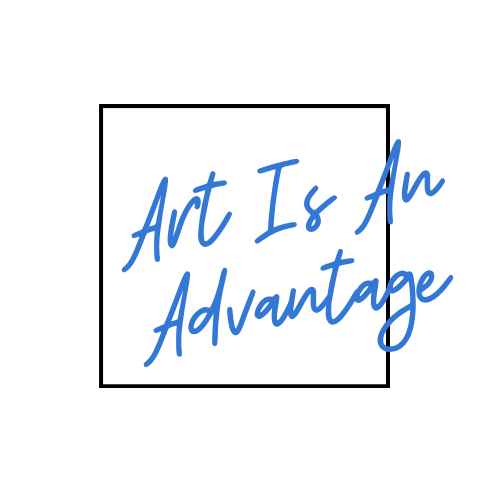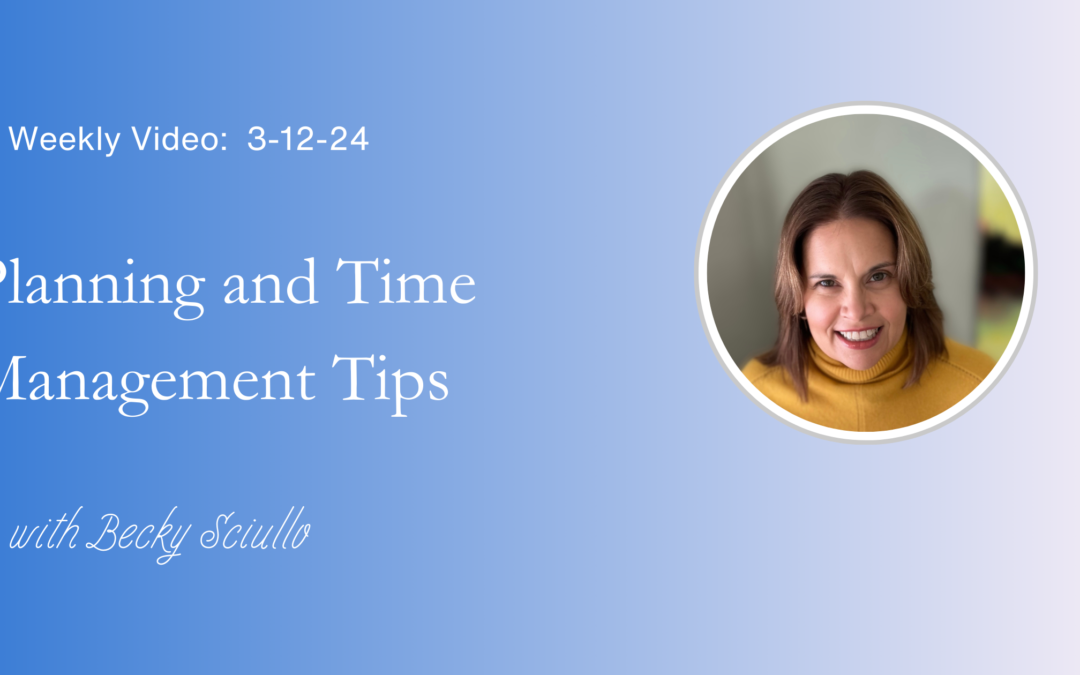
by Rebecca Sciullo | Mar 12, 2024 | Planning, Productivity, Resources, Time Management
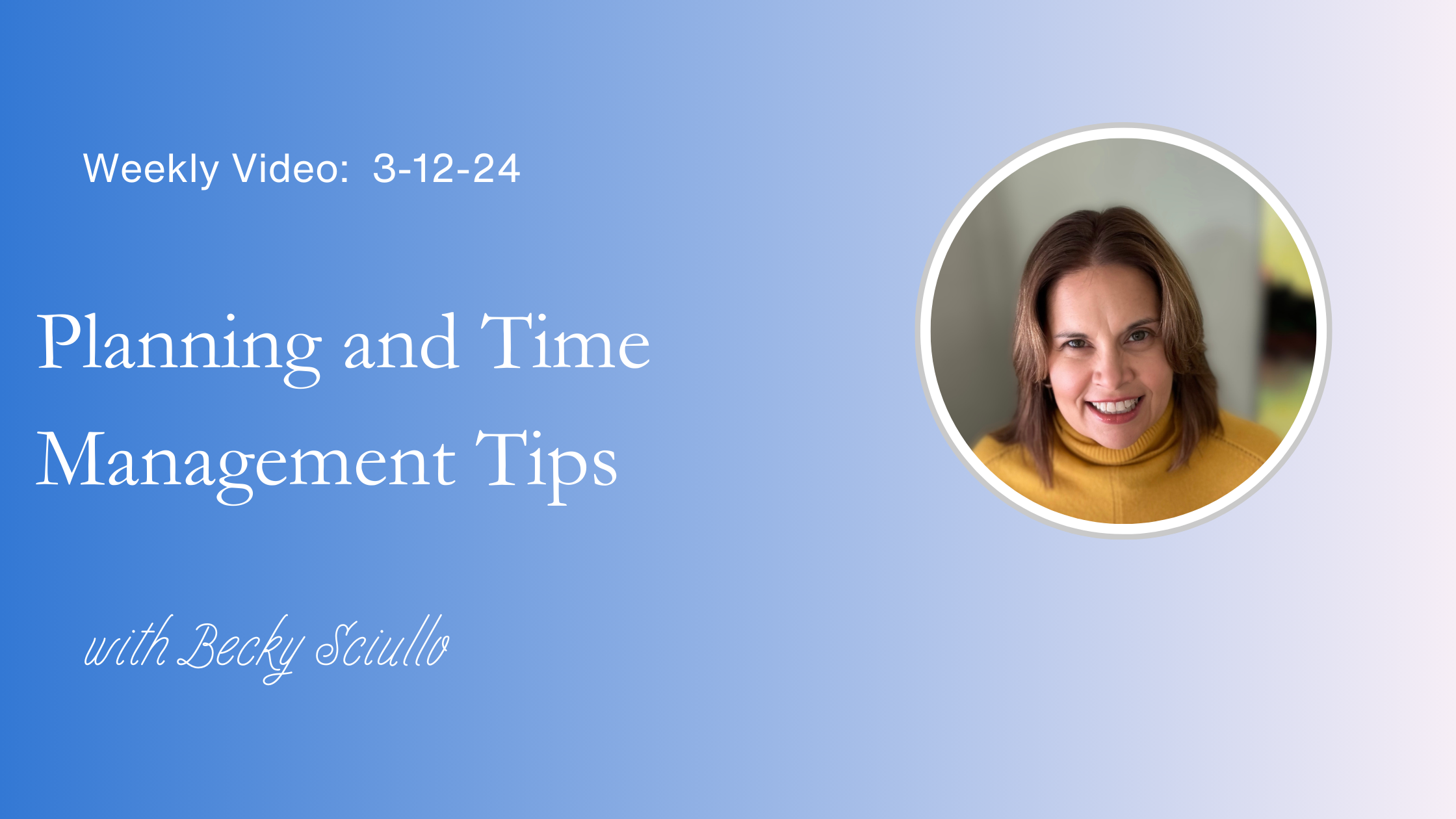
Mastering Time Management and Planning: Your Path to Productivity
This week’s video focuses on some ideas for planning and time management. Recognizing that implementing new marketing strategies sometimes means there is more to do, I share a few ideas around planning and time management that have helped me a lot.

Video Recap
1 – The Rule of 3
I use the number 3 to guide my focus on yearly goals and daily tasks. Choosing three things to strive for or accomplish out of a seemingly never-ending to-do list helps prioritize what needs to be done without getting overwhelmed.
2 – Revisit Your Plans More Than Once a Year
Planning isn’t a once-a-year affair. Establish yearly goals but review them quarterly to adapt to evolving priorities. Break it down further by creating monthly, weekly, and daily plans. This approach encourages flexibility and accomplishment while staying focused on long-term objectives.
3 – Time Blocking
Maximize productivity by scheduling specific tasks and activities on your calendar. Designate dedicated time slots for work projects, studio time, or self-care to stay organized and accountable.
Trust the Process
Remember, progress is about consistent small steps over time. Celebrate each milestone, no matter how small, and trust in the journey toward your goals.
Resources Mentioned in the Video
Create a 12-Month Action Plan: Use the code PLANNING for a 70% discount.
Michael Hyatt’s Full Focus Planner
Join my Weekly Email Newsletter
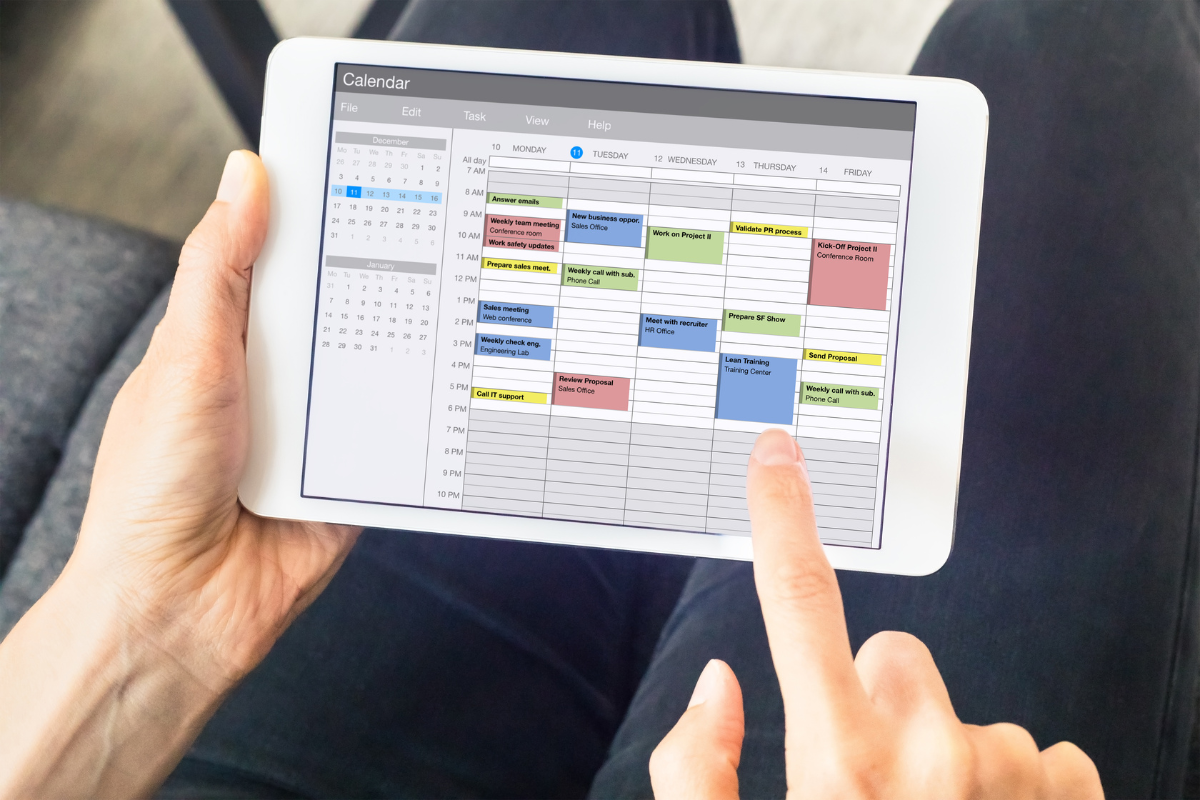
This post contains affiliate links which means I receive a small commission if you make a purchase using the link. For more information, see my full terms here.
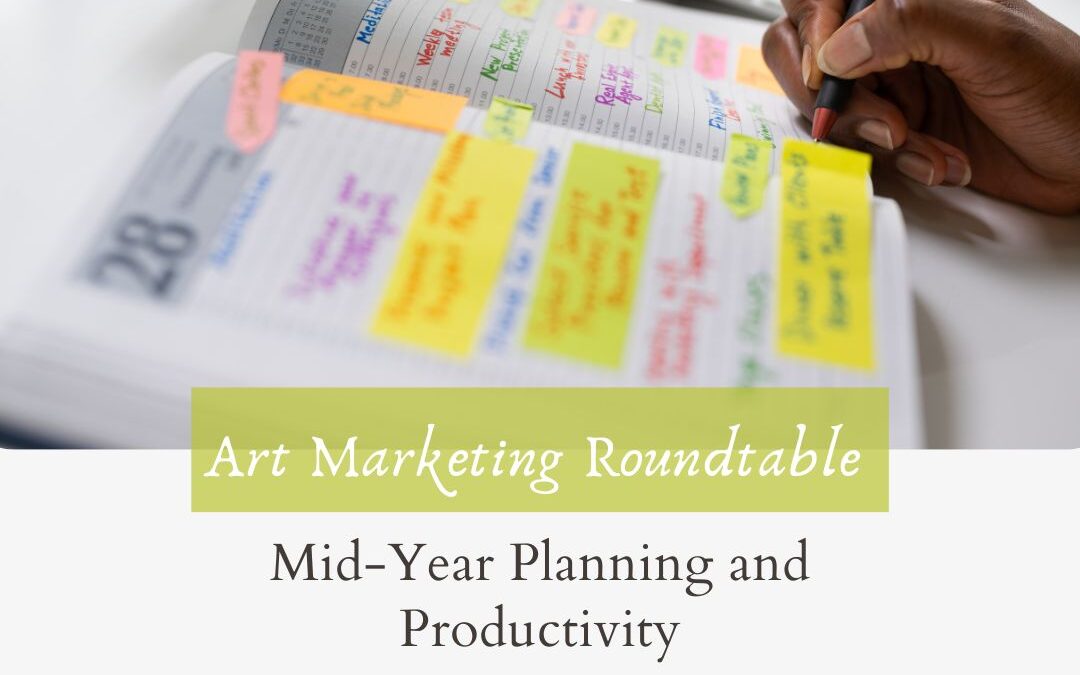
by Rebecca Sciullo | Jun 14, 2023 | Learning, Planning, Productivity, Time Management, Tools
How’s Your Year Going?
Do you plan once for your year and then not look at it again for the rest of the year? If you do, you’re not alone. It’s not uncommon to make solid plans and then get so busy with your work that you don’t check back in to assess how things are going.
Or, do you not have a plan but rather roll with things, creating work and putting it out there on your website or social media, hoping something will happen? Again, you’re not alone. The good news is there is always time to start making a plan.
You may have a plan and want to be more productive and assess how to improve things along the way.
For all three of these scenarios, and everything in between, join an upcoming art marketing round table where we will talk about doing a mid-year review for your art business and sharing productivity and planning tips.
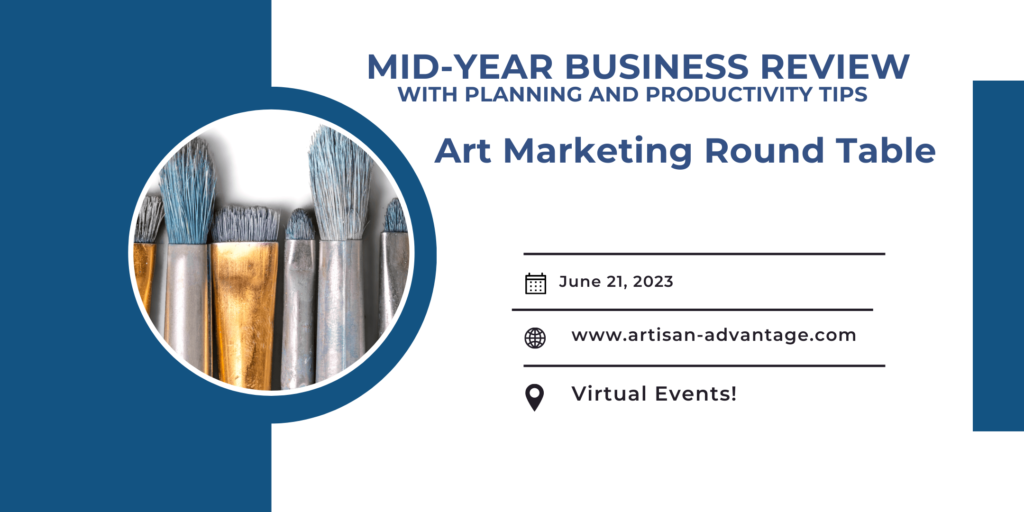
How to do a Mid-Year Review for Your Art Business
Planning is for more than just the beginning of the year. Artists should periodically take stock of how things are going and where they need to adjust their plans. Do this with a mid-year review. And, if you’ve never made a plan for your business, you don’t have to wait for the beginning of the year to start. Instead, learn strategies to get started with art business planning at any stage of the game.
This art marketing round table will focus on a mid-year review of your art business. We will discuss the review process and areas you should consider when going through this process. Discussion points will include assessing your performance, systems, and goals over the past six months. Then, take that information to determine areas of adjustment and improvement for the rest of the year. This comprehensive evaluation will guide your decision-making in growing a vibrant art business. Going through this process will help you to re-evaluate and clarify goals, optimize your practices, and foster a plan for business growth.
We will also discuss productivity and time management techniques.
Art Marketing Round Table: Mid-Year Planning – Wednesday, June 21, 2023
3:00 pm EST/12:00 pm Pacific
https://www.eventbrite.com/e/640713139247
Free Event to Help Your Art Business
This event is free, but space is limited.
For more information about upcoming round tables and other resources to help with your art marketing, please join my email newsletter.
by Rebecca Sciullo | Dec 10, 2018 | Planning, Productivity, Time Management
Do You Have a Morning Routine?
My morning routine is definitely one of the best parts of my daily schedule. It sets the pace and tone of my day. When I miss it, I find that my time isn’t quite as productive. How about you? Do you have a morning routine? If not, consider starting one in 2019. Here are seven tales of true productivity to get you started.
Want more help with your art business? Subscribe to my artist newsletter here
by Rebecca Sciullo | Oct 2, 2018 | Learning, Planning, Productivity, Time Management
 “I don’t have time.”
“I don’t have time.”
If you’re like most people, you probably say or think those words quite often. Lack of time often becomes a catch-all excuse for not getting work done in your art business – like creating, learning or just slowing down, taking time to plot and plan out your next steps.
Between work, family needs, school, and the endless items on your to-do list, it can be tough to find a spare minute to return an email, much less to post on social media, find and apply to shows or make it to a networking event. It may seem like if you just had one extra hour in the day, you would finally be able to fit in everything you want to do in your art business.
But the truth is, no one has an unfair advantage in the time department. We are all given the same 24 hours each day and it’s up to us how we choose to use them. Of course, there are certain things that simply must get done, like working and eating and taking care of a family. However, with some thoughtful planning, you can boost your day-to-day productivity and maybe even find some extra pockets of time to squeeze in what’s been eluding you.
If you can’t do a lot, do a little.
It’s easy to become paralyzed by the prospect of a large, time-consuming project whether that’s organizing your inventory, building a website or making time for your studio every day. When you hold yourself to sky-high standards and then miss the mark, it’s common to fall victim to the “all-or-nothing” mentality, which sounds something like this: “I missed my studio time today, so what’s the point of even trying to work”
Instead of overwhelming yourself and setting yourself up for failure, look for small ways to chip away at your goals, such as taking inventory of two pieces of art a day or simply working in your studio for twenty minutes.
Do the tough tasks first.
Take care of the most challenging or unpleasant tasks before you have a chance to talk yourself out of them. Hate networking? Attend an event that meets the first thing in the morning. Dreading posting on social media?. Schedule 15 minutes at the start of the day to do it, so it’s not nagging at you all day. Completing a tough task early will give you the motivation to plow through the rest of your day.
Schedule regular studio time.
Can’t schedule a large block of time in the studio every day? Can you try for a half an hour? Put it on your schedule and treat it like a real appointment, just as you would a client meeting. Whether it’s right when you wake up or in the space between dinner and bedtime, put it on your calendar along with your other tasks. As this starts to become a habit, try to gradually add a little more time until you’ve worked up to the ideal amount of time per day for your studio practice.
Get help.
It’s hard to let go of control of things, but you can only do so many things in a day. Sometimes, getting help is the only way to get everything done. You can’t hire someone to make your art for you. You can possibly ask your family members to help out around the house more or hire a cleaning service. Free up some time to focus on your business.
Eliminate unnecessary activities.
While everything on your plate might seem essential at first glance, there are likely some activities that can be trimmed. For a few days, track what you do in a day, then review the list. If you find your doing things that aren’t absolutely necessary and aren’t moving you toward your goals, give them the boot. You’ll likely be surprised by how much extra time emerges.
Take breaks.
If you don’t build periods of mental and physical rest into your day, you’ll find yourself taking unintentional ones. For example, you might schedule one or two 15-minute walks throughout the day. This gives you an opportunity to recharge while also sneaking in some thinking time to plan for your business. Or you could plan to reconnect with another artist during a coffee break. Without these planned time-outs, though, you’re more likely to succumb to mindless activities that offer little benefit to your business.
Get Enough Rest
Your might think staying up late helps you to get more out of your day. However, the time you save by sleeping less will likely mean sacrificing some of your energy, focus, and creativity. Resist the urge to burn the midnight oil. Instead, choose to rest and recharge so you can be functioning at your highest level the next day.
Each morning is a new opportunity to use your time more wisely. Be a little more thoughtful about how you use your time each day and you will move closer to meeting your business goals.
Would you like more tips on building your art business? If so, subscribe to the Artisan Advantage Mailing List.
Photo by Elena Koycheva on Unsplash
by Rebecca Sciullo | Apr 19, 2017 | Productivity, Time Management, Uncategorized
Do you take breaks during your work day? It’s proven that sitting is not good for our health. As an artist, you might work on your feet, which is a good start in not being sedentary all day…but even if you’re standing, it’s good to take mental breaks during your day.
I work at a desk, so I’ve made a practice of working for 25 minutes, and then taking a 5 to 10 minute break where I get up and move around. I decided to use this formula after reading the Pomodoro Technique Illustrated. Twenty five minutes seemed like a short amount of time at first, but I quickly realized that with some simple pre-planning, it was just enough time to help me to stay focused and get things done. In order to make the 25 minute blocks work for me, there is some simple pre-planning involved. I know exactly how many 25 blocks I will work in a given day and what I will be doing during those blocs. Otherwise, I would spend 5 of the 20 minutes figuring out what to do next. I ask my new best friend Alexa to remind me when 25 minutes are up so that I know to take my break.
What do I do during those 10 minute breaks? It varies. Since I work at home, I often use that time to do some light housework, throw a load of laundry in, fold some clothes or other chore. I’m always amazed at how much I can get done in those breaks. I also use some of the breaks to take time for calm meditation. If I have quick phone calls to return, I might do that while walking around the house to get on my feet.
During those 25 minute blocks, the key is that nothing gets me up from my desk. I save anything that I might want to do – like get a cup of coffee – for break time.
This system has worked so much better for me than my old habit of just sitting at my desk for hours and hours. I find that I’m much more productive and feel better at the end of the day.
If you’re not taking breaks during your work day, try to incorporate a system that works for you.
Do you have a system for taking breaks that works for you? Share it here in the comments below.
Would you like more tips and ideas for your art business? Please sign up for my free e-newsletter here.
by Rebecca Sciullo | Sep 14, 2016 | Planning, Productivity, Time Management, Uncategorized
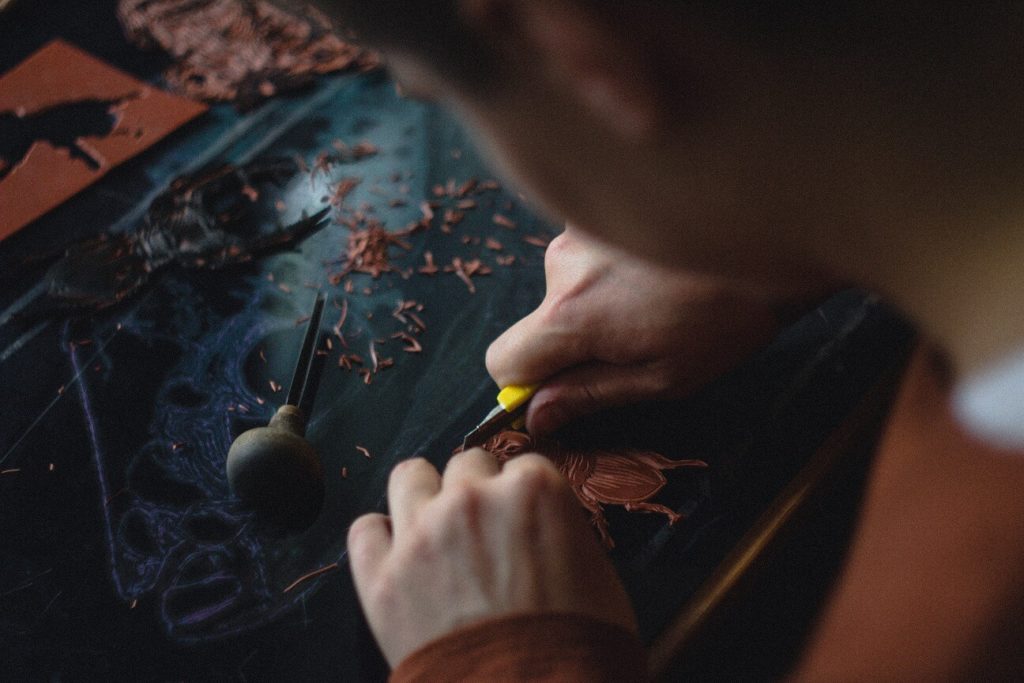 The most important part of your visual art business, creating, can easily fall off your to do list when you’re faced with other pressing tasks in your business and life. Yet, making art regularly is the lifeblood of your business. While I’m not a visual artist, I am trying to set aside consistent time for writing. Maybe you can try these nine ways I use to protect my daily writing time.
The most important part of your visual art business, creating, can easily fall off your to do list when you’re faced with other pressing tasks in your business and life. Yet, making art regularly is the lifeblood of your business. While I’m not a visual artist, I am trying to set aside consistent time for writing. Maybe you can try these nine ways I use to protect my daily writing time.
1. Put it first
While it seems counter-intuitive, try creating before doing anything else in the day. I have a set time goal for myself and get busy as soon as I’m ready to work. You can do the same devoting your time to your creative work. The accomplishment of making progress on your art will boost your confidence for the rest of the day.
2. Schedule it as an appointment
Block out the time on your calendar. Treat the time as the same as any important commitment.
3. Say no to myself.
If I am so busy that I can’t find twenty minutes at the start of each day to write, I know there is too much on my plate and something has to give. This is a life issue, not a creativity issue. If you’re have the same struggle, stop taking on too much and get smarter about delegating what is already on your plate.
4. Say no to other people
While in the studio, close the door, turn off your phone, and stay away from email. What happens when you need to do something during the time you’ve pre-blocked for your creative work? Don’t cancel it, but reschedule it for later in the day.
5. Change the environment. Make your work space a place that you want to retreat to. This can be done with lighting, music, or a great cup of coffee. Take some time to figure out what is going to motivate you to get into that space.
6. Control your environment
Stay off your computer and put your phone on forward. I turn my phone ringer down and only answer if it is school calling. You can do the same. If you must be available to a sitter, school, or family member..have a hard and fast rule that you only answer for that one specific number.
7. Record other ideas to maintain focus.
Keep a notebook handy to write down unrelated thoughts and to-dos that pop into your head. This puts your mind at east knowing you won’t forget that thought later.
8. Stick with it
Try the Pomodoro Technique which keeps you focused or a 25 minute block of time. Set a timer and force yourself to sit through periods of creative block, discomfort, or even boredom.
9. Match the task to the time
I am at my best first thing in the morning. I have a lot of mental energy at this time. This is when I try to schedule my writing time. Later in the day, my mind is more easily distracted and my mental energy fades. More mundane business and personal tasks are taken care of in the middle of the day. Figure out when you are most creative and structure your studio time around this peak.
Do you have a trick or technique that has helped you to stay in the studio on a regular basis? I’d love to hear your ideas below.

